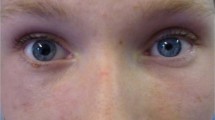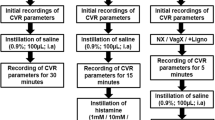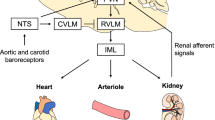Abstract
REPORTS of the role of the sympathetic nervous system in anoxic mydriasis are not clear. A generalized sympathetic discharge occurs during systemic anoxia1,2, but some published data suggest that the sympathetic nervous system plays no part in the pupillary dilatation which occurs during anoxia and ischaemia. Little or no dilatation of the parasympathectomized pupil was observed during anoxia in the presence of an intact sympathetic innervation3. The pupil which has had an interruption of sympathetic and parasympathetic innervation dilates during asphyxia4.
This is a preview of subscription content, access via your institution
Access options
Subscribe to this journal
Receive 51 print issues and online access
$199.00 per year
only $3.90 per issue
Buy this article
- Purchase on Springer Link
- Instant access to full article PDF
Prices may be subject to local taxes which are calculated during checkout
Similar content being viewed by others
References
Feldmen, J., Cortell, R., and Gellhorn, E., Amer. J. Physiol., 131, 281 (1940).
Manger, W. M., Wakim, K. G., and Bollman, J. L., Chemical Quantitation of Epinephrine and Norepinephrine in Plasma, 202 (The Charles C. Thomas Co., Springfield. Illinois, 1959).
Gellhorn, E., Biol. Symposia, 7, 73 (1942).
Hodes, R., Amer. J. Physiol., 131, 144 (1940).
Author information
Authors and Affiliations
Rights and permissions
About this article
Cite this article
KAPP, J., PAULSON, G. Oculosympathetic Response to Circulatory Arrest. Nature 213, 392–393 (1967). https://doi.org/10.1038/213392a0
Issue Date:
DOI: https://doi.org/10.1038/213392a0
Comments
By submitting a comment you agree to abide by our Terms and Community Guidelines. If you find something abusive or that does not comply with our terms or guidelines please flag it as inappropriate.



